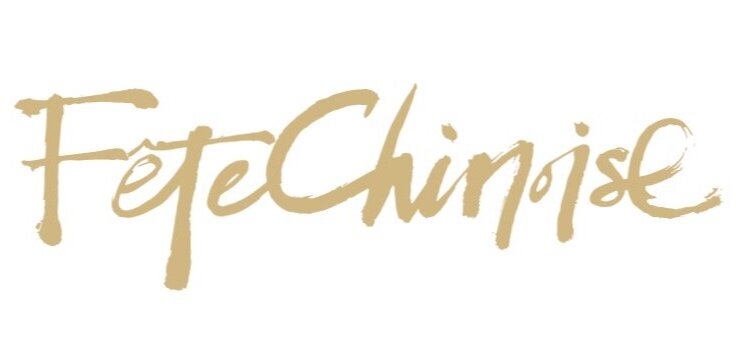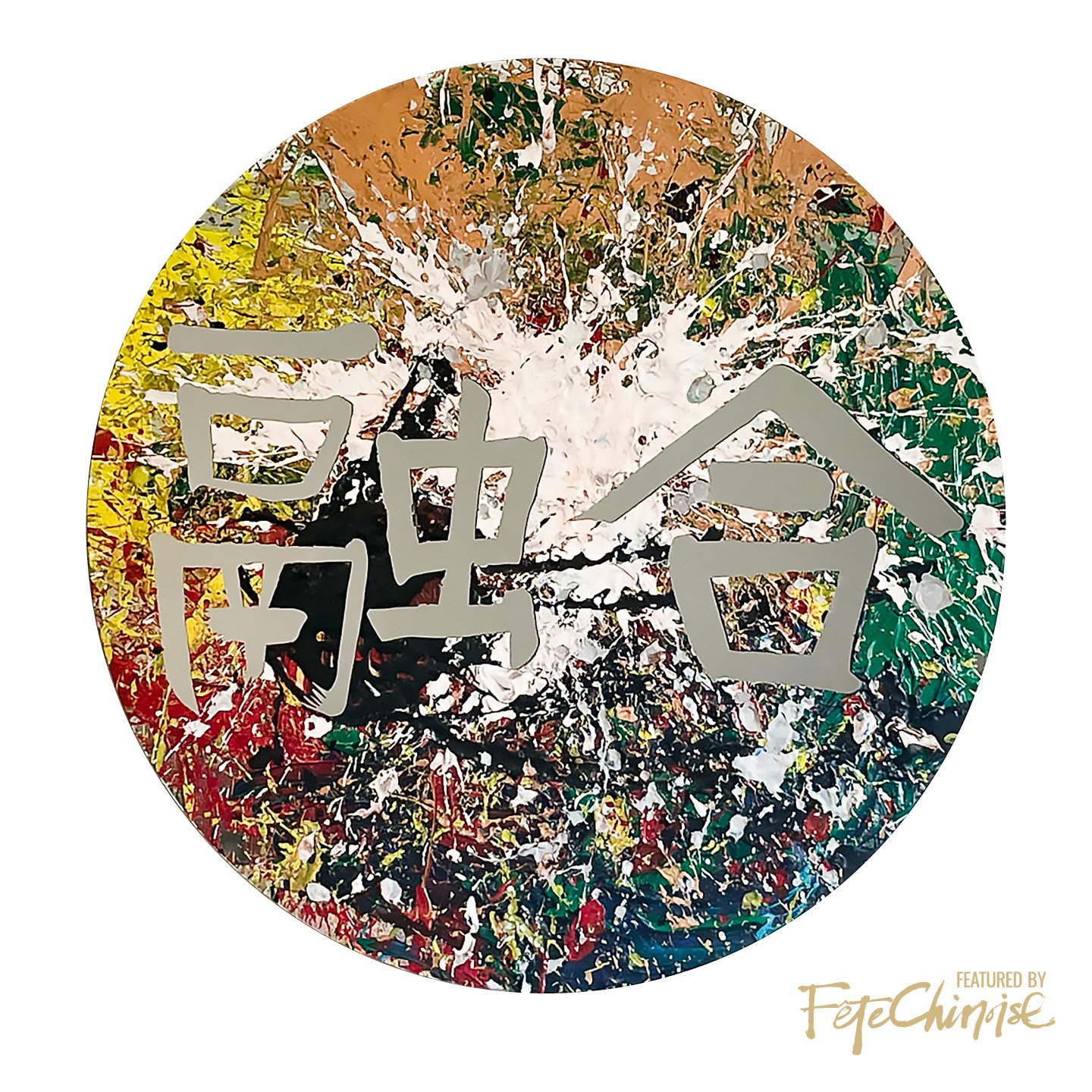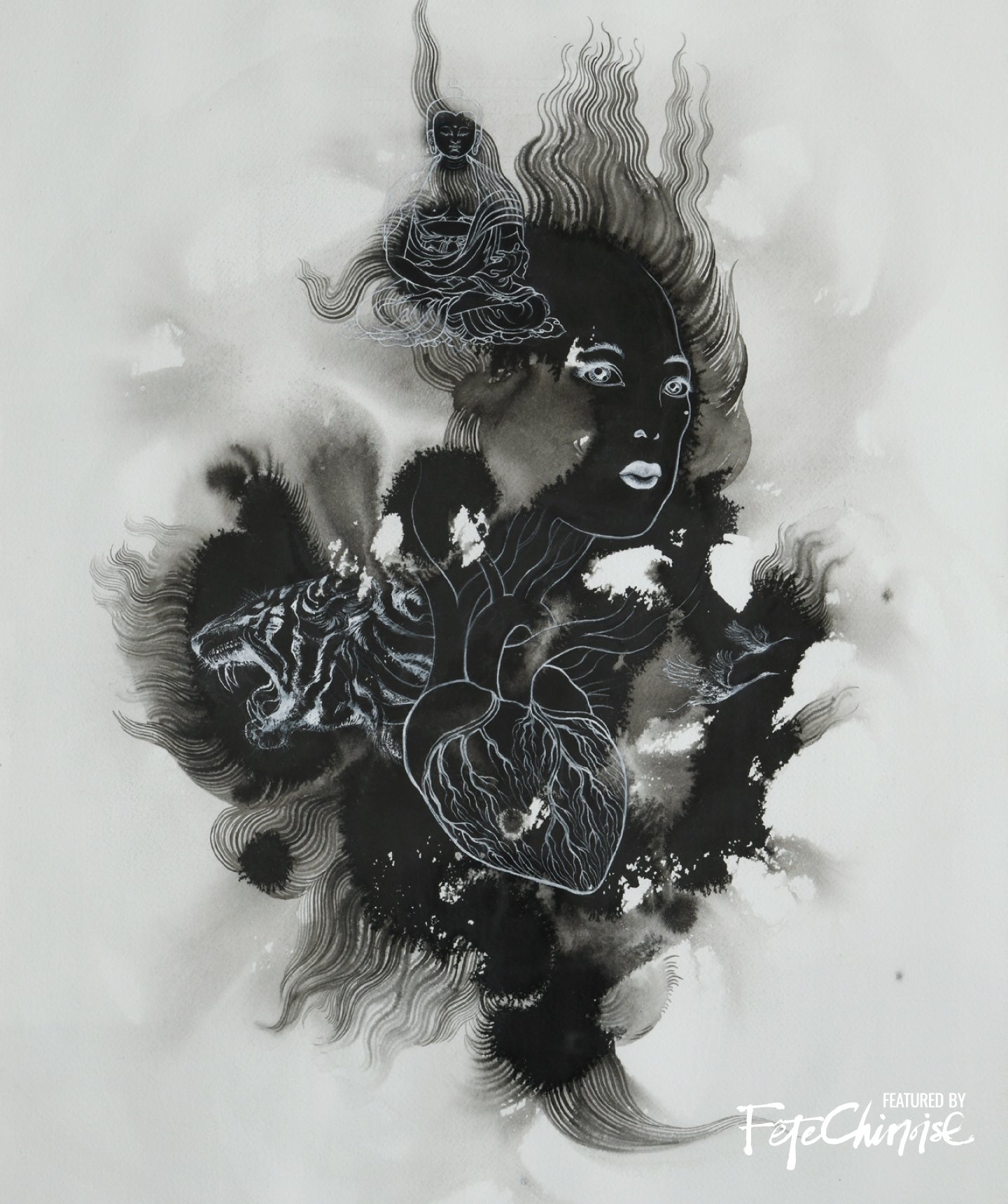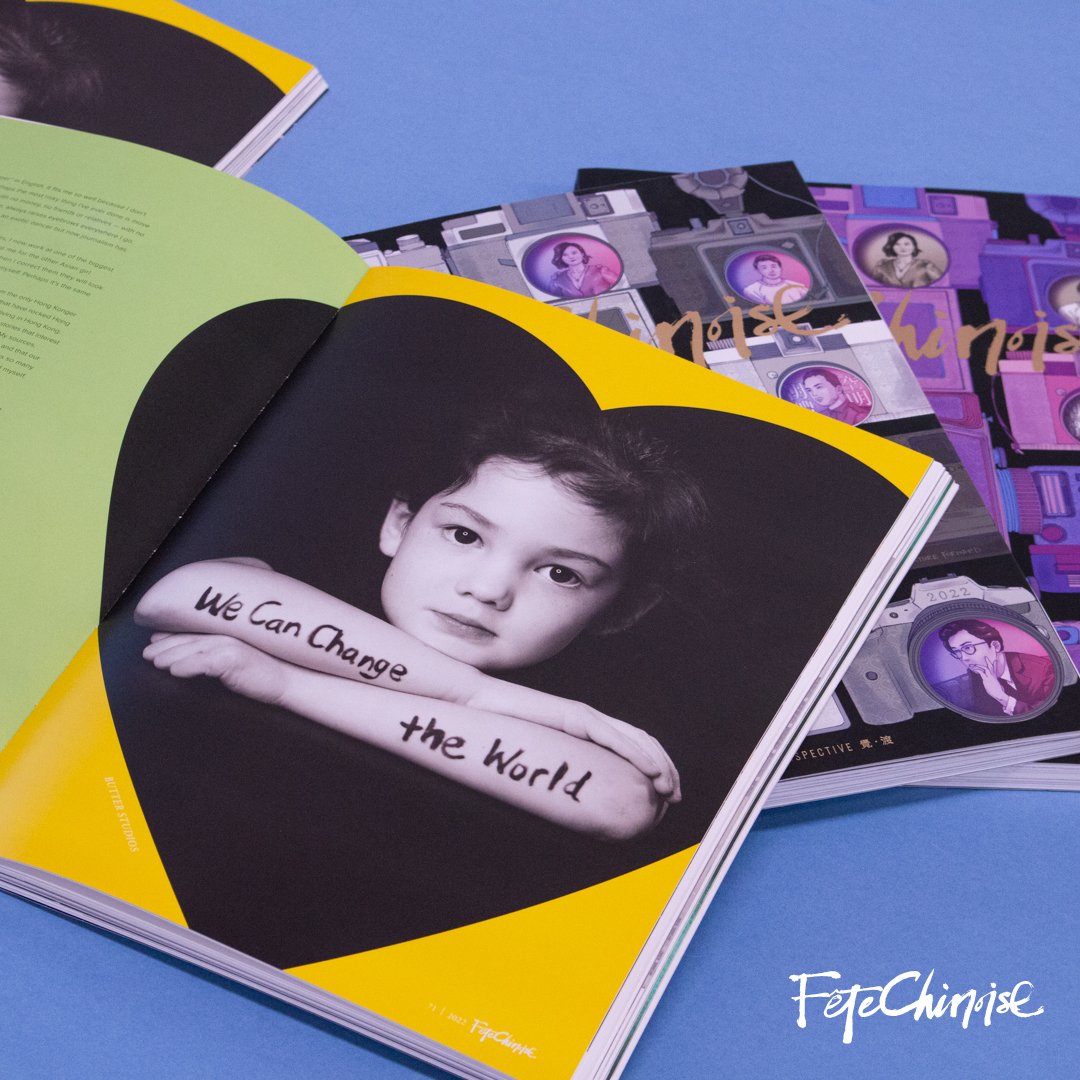Conquering Hate with Art + Love 2.0 用愛與藝術征服仇恨 第二章
celebrating asian heritage month
curated and Written by Fête chinoise Editorial Team
Works submitted by responsive artists
Art reflects our ever-changing culture and has the ability to shift society's values and views. Racism and injustice have been huge topics during the pandemic, especially in the Asian community, where the anti-Asian racism, discrimination and violence in North America became a harsh reminder that we must stand up against hate.
This chapter is an artistic movement in response to the unwanted hatred — an initiative we launched in Edition 7 and with an overwhelming number of submissions. We opened up the invitation for artists to share their art again, and we hope that their messages of compassion, understanding, and love move you.
In Celebration of Asian Heritage Month, we encourage you to share the work + stories from out magazine and instagram with others! And if you have art to submit for editorial consideration; please don’t be a stranger! We rise together!
藝術是文化變遷的倒影,也是改變社會價值觀的領航。經歷了三年新冠疫情,種族主義和不公平依然是一個重大的議題。反亞裔主義、仇恨和暴力事件有增無減,更多人開始醒覺,並面對日益嚴峻的社會問題,我們不可以再繼續沈默!2021年,我們首次推出《用愛與藝術征服仇恨》篇章, 蒐集我們的集體回應、我們反仇恨的共同創作,獲得莫大迴響。詢眾要求今年延續至第二章 ,一起以藝術對教育、共融、諒解和愛的擁抱。 你將欣賞到的文章及圖像,全是讀者們的原創作品。
Vanity of the Soul, created by Sandra Thach
Sandra was excited to explore composition and research the objects she wants to showcase. She was inspired by a still life displayed at her home and on her first trip to Asia when visited sacred temples. This painting’s composition was inspired by several vanity paintings including Jacques Linard’s Les cinq sens (1638), Maris van Oosterwyck’s Vanitas Still Life (1668) and Jean Siméon Chardin’s Nature morte avec des attributsdes Arts (1766).
融合 Rong He = People Melt Together
Created by Ian and Angie Barnett, 班⽴賢 and 張贏之.
I created this piece for people to look through their own thoughts… to reflect on themselves.. to see their part in the chaos of life. May the mirror be your guide.
An Unspoken Yarn
Written by Angela Norwood
Three white, American women on a bus in China. A small, rattling shell of a bus heading fast and loose down a rough road in rural southwestern Yunnan Province. Planted fields stretched out flat for miles against a mountainous backdrop, looming perpendicular to the valley floor. Each woman filled her own bench seat, backs to windows, legs stretched out, six hiking boots jostling each other in the aisle. With each bump in the road body parts flung against the impossibly close seatbacks. Unruly hair slapping in the dusty wind from open windows, the rough road, the metallic clatter of the bus barely holding together, the bouncing of bums on seats, the ceaseless Chinese pop music aimed through tinny speakers in the driver’s general direction, these rhythmic bits swirled in concert around me as I tried to knit.
The knitting needles were very small and joined end-to-end by a flexible plastic filament to make one long needle. The stitches it made were tiny. I had purchased needle and yarn in Kunming after noticing multitudes of women knitting around the city. Sitting and knitting, knitting and talking, walking and talking and knitting, hands moving in mechanical rhythm setting the pace for their conversation and stride.
We lurched as the driver stopped to pick up three more women from the side of the road. We could tell they were Naxi (na-she), local to the region, by the blue coats and white sashes they wore with baskets tied to their backs. The women moved past to sit behind us, two shared one bench, sitting upright, legs forward, arms draped over the baskets of greens in their laps, calloused hands resting on the rims. The other sat behind them in the same manner.
Another bump put air between seats and bums. I looked down and saw that my knitting had fallen apart. With my limited knitting skills, it seemed like a total loss. The filament had come out of the end of one of the needles and fallen out of several of the tiny stitches in the middle of the row. Little loops of yarn were left unsupported and began unraveling with the shaking of the bus. I stared at the mass in my hands. It had gone from neat, regimented stitches to certain hopeless entanglement in a matter of seconds. In defeat I put the knitting down on my backpack that had slid into the aisle.
I surrendered to the rocking and bumping and sleepily watched out the windows across the bus. I noticed movement in the aisle and looked down to see a weathered hand, slowly drawing my pile of knitting into the lap of the woman sitting nearest me. As I looked, she paused mid-act. I smiled ruefully to indicate that I was sure it was a lost cause. She studied the knitting, assessed the situation and slowly grinned and nodded her head. She reinserted the filament then gently and skillfully eased the stray loops onto the repaired needle. For the stitches that had fallen out completely, she used the ends of the needle to loop yarn from the rows below to make new stitches. Her companions watched over the operation. They both smiled and occasionally glanced at me with affirming nods.
At last, the woman held out the repaired swatch for me to take. Upon inspection I smiled, closed my eyes, and bowed my head in thanks. As if on cue, the driver came to another abrupt stop. Out the window I saw nothing but more fields. There were no structures, no other roads. The Naxi women quickly gathered their baskets and moved down the aisle and off the bus. They stood waving as we left them behind.
After knitting a few rows I noticed the “scarred” stitches that stood out from the others. I thought of the imperfection, and of unraveling it all. Then I remembered the care with which she had handled my swatch, the communication between us, without need for language, the gentle care with another woman’s handiwork. Just as scars on a body tell stories of transformation, this little swatch held the story of my journey — the yarn like a timeline that held a moment of kindness among women. I would have to keep knitting and adding to it. I couldn’t force a story to emerge, nor could I wait to see what the stitches would reveal, where the yarn would take me.
米 (mǐ) uncooked rice: It Takes Three Generations, created by Jenie Gao,
米 mǐ | uncooked rice is an installation based on representational disparities in the US arts industry. My family owned a takeout retaurant in the 1990s, and it became the economic vehicle by which we pulled ourselves out of poverty. The takeout table was a space of formative learning for me: where I learned to draw, read, observe people and engage with the public. The table is a place for gathering and an altar to memory and grief. In this installation, it further becomes a means of elevating this lived experience as a relevant pathway to cultural authorship.
Jade, created by Michelle Jing Chan.
This comic was inspired by my relationship with my grandparents and my fear when seeing the attacks on Asian elders. Although I now live far away and my grandma is no longer alive, I still call my grandpa every week and am always anxious for his safety. My grandparents used to tell me to “be careful” at the end of each call, but these days I’m the one saying that to my grandpa. Even though we both tell each other not to worry, underneath I know that we are expressing our love and wanting the other to be safe.
When I Was Young, created by Heming Luan
When I first arrived in Canada as an international student 12 years ago, I had no idea what life would hold for me; the uncertainty and loneliness made me both excited and anxious. That is when I drew this portrait. I'm a full-time data analytics professional with a passion for drawing. I came to Canada 2010 and am now living at Richmond Hill, ON with my family. Under the high contrast colours, I believe the image captured the 'unknown' and 'lost' feeling. As immigrants, we will go through periods of uncertainty and loneliness. That period, however, will come to an end. Continue to be brave and strong.
Heart Illumination, created by Elim Mak
This painting is a self-portrait that explores my intersectional identity as Asian cisgender woman. The heart symbolizes the embracing of my True Self, with all its thoughts, perspectives and feelings, while navigating an increasingly polarized, black and white world. I can choose to respond to racism by either fighting or fleeing. Mindful awareness is essential in finding my voice and speaking my truth while remaining open and curious to other people’s lived experiences.
Remembered Always, created by Serene Chan.
These last few years have been exceptionally difficult for everyone. There’s been so much loss; a death of someone often lives on for years and years with people who still love them. In Chinese symbolism, cranes are often believed to carry spirits to heaven after they die. This painting depicts loss remembered by the living and hope that their spirits are brought to a happier place. The clothing of the characters are designed by Public Policy’s FW 2021 collection honouring the Chinese Transcontinental Railroad Workers in 1800s and all the overlooked Asian immigrant stories.
A Single Grain
Written by Kan Cheung
“Oh no!” are the words out of my mouth as I see the waterfall of rice missing the pink container and bouncing lightly on our wooden floor. I quickly sweep up the mess and put away the canister but notice a single grain of rice that I missed. As I pick it up to throw away, I realize how little weight it has and if held, how it can easily fall through the cracks or be blown off. Suddenly, I think about its cultural weight that can sometimes be too heavy to hold.
I am reminded that rice is the backbone that makes a meal a meal – all other food being accessories. I see friends with mouths half open with laughter and half-mashed rice, sharing our lives and experiences. I blink and I see my family sitting at a Western restaurant not knowing what to order as burgers, fries, and meats without rice left my parents confused. As I close my fingers close around the grain of rice, I see another scene of myself as a child, gobbling down my food as quickly as possible, hearing the not-so-stifled laughter of other children making their own assumptions of what I was eating based on the smell.
When I open my hand over the garbage, the grain is nowhere to be found. I realize that my own culture feels the same way – trying to grasp it but often losing it – not knowing where I lost it along the way. I am reminded that similarly, I sometimes try to ‘lose’ my culture to fit in with my white neighbors, trying to not be different. However, as I am about to give up, I find that grain stuck tenaciously on the back of my hand – definitely there.
Navigating Renewal, created by Sherlyn Hu.
I created this illustration as part of my ongoing pursuit to bring together art and human/healthcare to explore empathic relationships and reflective capacity in learning and care, in order to improve the quality of and equitable access to human care. The design elements reflect the intersection of my clinical care, cross-cultural traditions, and personal reflections on the meaning of recovery and growth from life's challenges and opportunities. This illustration was inspired by my former patient who described her experiences living chronic mental illness as a lonely "one-eye traveller," whereby caring attention wanes as time unfolds. She yearns to reconnect with life's basics as a sustainable way to recover and thrive, including connections with the land, water and the engaged people in her communities.
Stop Asian Hate, created by Alix Stemmelin, modeled by Edison Fan
My inspiration was to instill a spirit of positivism and cheerfulness on social networks after a wave of violence against Asians and an unbearable pandemic. It also echoed the just-as-unbearable situation of lgbtq+ people in Asia and around the world. This drawing was made in 2021, after an open call by Marcus Kan, responding to racial discriminations against Asians, mostly in the U.S. during the COVID-19 pandemic.
Love is the Key to Dispel Hate, created by Florence Lai.


















Art reflects our ever-changing culture and has the ability to shift society's values and views. Racism and injustice have been huge topics during the pandemic, especially in the Asian community, where the anti-Asian racism, discrimination and violence in North America became a harsh reminder that we must stand up against hate.